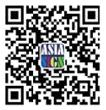
By Steve Aust
A graduate of the Rocky Mountain College of Art & Design, House of Signs (Frisco, CO) proprietor Roger Cox learned about sign design and layout fundamentals from Earl Vehill, one of the Letterhead movement’s “Original Seven” founders.
House of Signs(弗里斯科有限公司)老板罗杰·考克斯毕业于落基山脉艺术与设计学院,在Earl Vehill学习了标志的设计和基本面布局,同时他也是信笺运动的“水星计划7人”创始人之一。
“He helped us with the sign project that we tried to sell while in college, and, in return, we helped him letter show cards, which sometimes numbered in the dozens,” he recalled. “It was a very inspiring education.”
他回忆道“罗杰·考克斯帮助我们签署项目,我们也在大学里尝试出售设计的标识,作为回报,我们帮助他写展示卡片,偶尔会有几十个多,这样的帮助是非常鼓舞人心有教育意义的。”
After graduating, Cox went to work as a ski bum in the Colorado high country, but continued to work on signage. He said his roommates kicked him out because of the fumes that emanated from Shot enamels he used to hand paint signs. Looking for another place to set up shop, he found an historic cabin and set up shop in 1989. Since, House of Signs has grown into a 3,000-sq.-ft. shop with five employees – he also operates Sign Tech, a vinyl-graphics provider – who fabricate routed and carved, HDU monument and building-mounted signage for resort cities throughout the Rocky Mountain state. Some signs have also been sold nationally and worldwide.
毕业后,考克斯去了科罗拉多有滑雪山脉的国家上班,但是仍然致力于标识行业。他说,因为在家用珐琅做手绘标识时,发生的化学反应产生了一些烟雾,所以他的室友把他赶了出来。在寻找另一个地方开店的时候,他发现了一个历史性小屋开设于1989年。到后来House of Signs已经发展成了有3000英尺大的商店,并且已经有了五个雇员。他也运行标识技术,不仅提供乙烯基制作图形的材料也制造路径和雕刻标识。商店凭借HDU纪念碑和安装的建筑标识贯穿了整个落基山州,他设计的很多标识也已经在国内甚至全球销售。


“The region’s mining history, the architecture and strict city sign codes are all factors we take into account with our designs,” Cox said. “We think it reflects the local culture with our own creative interpretations. We’ve had tourists from Pennsylvania and Australia see our signs, reach out to us, and order signs for their businesses back home.” He said most clients have no specific design direction and allow full creative freedom, and noted that helping clients understand the importance of negative space, and that “bigger isn’t always better,” is an important part of meeting clients’ needs.
考克斯说:“这里的采矿历史和架构,以及严格的城市标志代码,都是需要我们在设计时要考虑和达到用户要求的因素,我们认为这里的标识需要融合了当地的文化,加上我们自己的理解并加以创新。当来自宾夕法尼亚州和澳大利亚的游客看到我们的标识时,通常都会联系我们,下单购买这些标识。我们大多数的客户都没有明确的设计方向,他们完全交给我们,由我们自由的去创作,我们要帮助客户理解空间的重要性,尽可能满足客户更多的需求”。
Cox noted 3-D sign design requires more complexity than flat signage because it entails “more moving parts.” He said, “How much carving and the level of detail required to execute a design should be determined early. Blend materials and finishes to be dimensional and aesthetically pleasing, and mesh them with an integrated bracket or framework.
考克斯指出,因为设计3D标识需要更多的移动部件,所以设计3D标识的要求比设计平面标识更复杂,3D标识雕刻和执行设计的详细要求也要尽早决定。3D标识的设计需要混合材料做集成支架来完成空间和美观的完美结合。
“Very clear vector design is important before importing design files into 3-D software,” Cox said. “This allows the CNC router to run more smoothly and quickly. However, the files we receive are often of poor quality, and we have to remove dozens of nodes, or redesign it altogether. We ask for .AI or .EPS files, but often receive low-resolution .JPGs. Signs end up 8-12 in. thick, or more, and files are required for each corresponding layer.”
考克斯说:“在把设计文件导入3 D制作软件之前明确矢量是非常重要的,这样才能让数控雕刻时更平稳、更迅速的运行。但是,因为我们收到的图片文件质量通常比较低,所以我们要删除许多节点,甚至完全重新设计它。我们要求客户提供AI或EPS文件,但往往得到低分辨率的Jpg图片。标识在最终完成时要达到8 – 12英寸厚的图层,甚至更多,所以每个对应层都需要文件。”

Cox has gained a tremendous asset by hiring Periandros Damoulis, former operator of a signshop in his native Greece, who’s previously been featured in several ST issues. Discouraged by his homeland’s dire economic conditions, “Peris” sought new opportunity in the U.S. He began learning the sign trade when he was 10; a signpainter operated a shop adjacent to his father’s market, and he was immediately entranced with handlettering’s nuances. He opened a shop at age 22 after having served a 10-year apprenticeship and graduating from design school.
考克斯还取得了与帕里斯的合作,帕里斯以前在老家希腊标识商店里工作,因为本国经济的不景气, 来到美国寻求新的商业机会,他10岁时开始学习经济贸易。通观他父亲用一生的精力经营一家商场,让他拥有丰富的实践经验。并且,他在设计学院毕业后做了10年学徒,22岁开始自己创业。
“The colorful, rustic designs that House of Signs produces are very similar to my style,” Peris said. “In one of our first design meetings, we began with pencil-and-paper sketches and independently arrived at a very similar design. I immediately understood the importance of chemistry!”
帕里斯说,“多彩的招牌非常符合我的风格,在我们第一次设计会议时,我们就用笔和纸开始素描类似的设计,那时我就立刻明白了材料与标识涂料完美搭配的重要性!”
One key example of the shop’s successful, resourceful design involved a building-mounted sign produced for Sunlogic, a Breckenridge, CO sunglass shop. Local codes didn’t allow signs to project 4 ft. beyond the building, or rise 8 ft. above street level. Also, the building’s Victorian architecture provided little mounting surface for the sign.
这里有一个太阳镜的标识案例跟大家分享一下,通过我们赋予Sunlogic标识丰富的色彩图形以及巧妙的安装施工,另这家太阳镜公司在商业上获得了巨大的成功与收益。因为当地政策的种种限制,并且他所开设的店面属于维多利亚时代的建筑,所以我们在标识的安装面上做了很多的考究。
To solve the customer’s problem, they devised the sign’s support system to partly be concealed under the building’s covered overhang, which reduced its projection footage. And, to preserve the building’s detail, House of Signs developed a bracket that hugged one of the structure’s corbels, and the design went vertical to maximize allowable size.
在满足客户的前提下,我们还给这个标识设计了专用的标识系统,来隐藏大楼里过剩出现的内容,这样不但减少了投影的画面也保护建筑的细节。House of Signs公司还开发了一种新的支架,来做环保型支撑结构的标识,体现了视觉上的垂直最大化。








